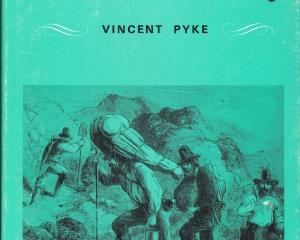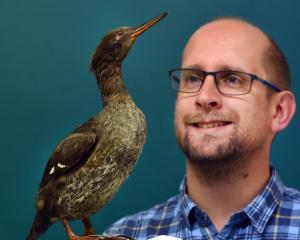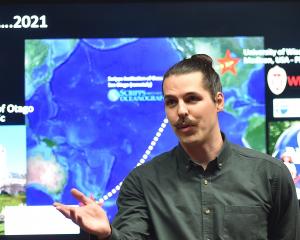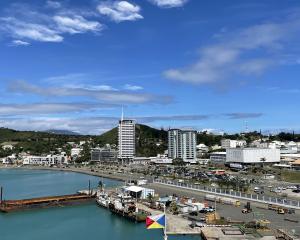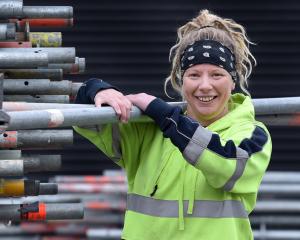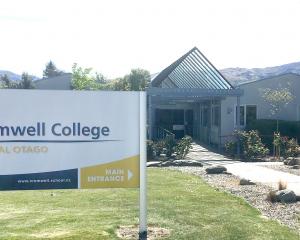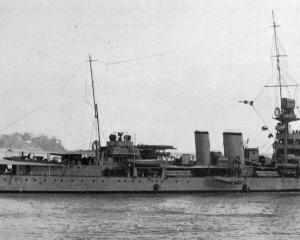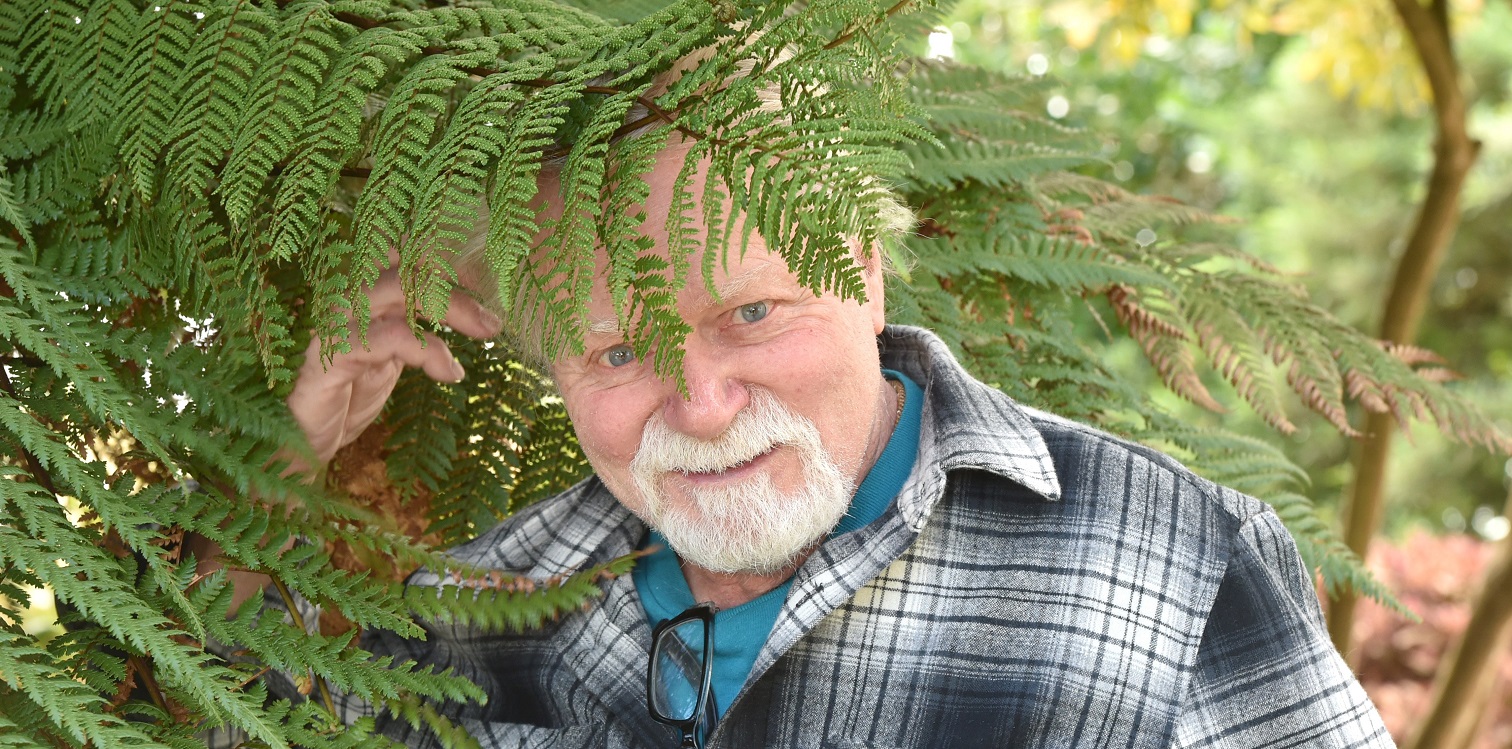
Holding his crayons on to the fins of a steam radiator, a 3-year-old Dan Welden is fascinated by how they are melting in front of his eyes.
That was the first time the American master printmaker, painter and teacher can remember making something he thought looked beautiful.
"I think there were different things at that age I would look at differently than other people. My father was very angry with me," Welden said.
The next time he had that experience was spitting out of a second-floor window and watching it as it fell to the ground.
"I would watch how it would go in the breeze. Things like that were very interesting to me."
As he grew up, that creative awareness emerged in paint and he headed off to university to study art and education, although at the time he was still considering a career in sport as he was a successful gymnast and squash player.
"I thought ‘I’m pretty good at art and I could get better at art but my body isn’t going to get better’."
However, it was not until he and his then wife moved to Munich, Germany, after graduating with a master’s degree that he really discovered his passion.
At the Akademie der Bildenden Kunst in Munich, where he was studying painting, he met an artist and teacher named Kurt Lohwasser (1922-99), who was to become a great friend and mentor.
"He took me by the hand and showed me different avenues. We would go into the alps together and he’d point out things about art. Instead of giving answers, he would provide questions — that was his method of teaching. It always challenged me.
"He held the carrot, that I couldn’t quite grab."
As a result he changed his whole course of study and the planned one-year stay in Munich turned into several years.
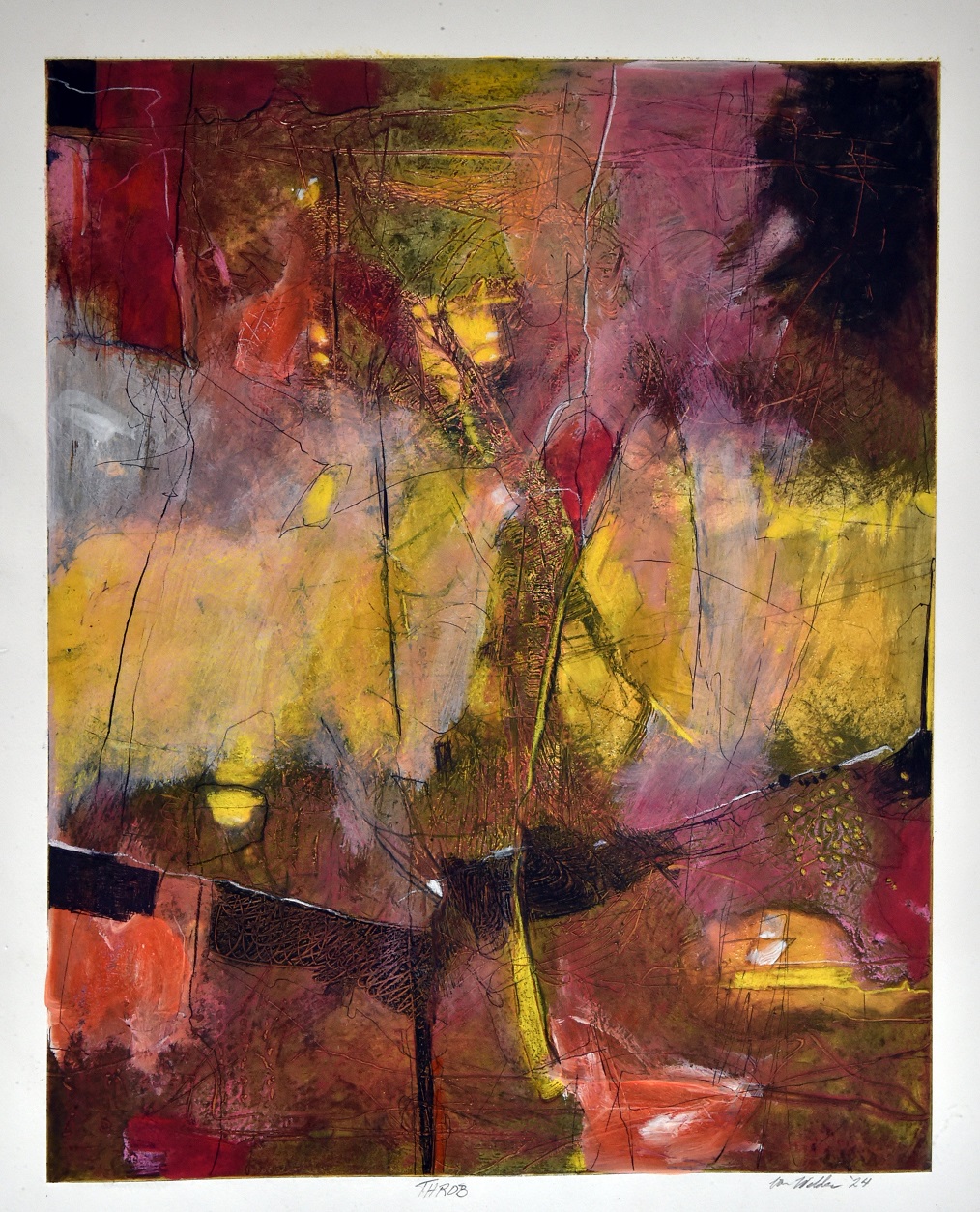
His first lithographic stone was a family coat of arms he thought could make a handy gift for family members.
"He told me ‘now you’ve got that out of your system — let’s start making some art’. He was gentle, he was kind, yet everyone had a fear of this man.
"So many ways he influenced me."
But he can remember the turning point — it was the day after Elvis Presley died in 1977. Welden had climbed by himself up above the timberline beside a Norwegian fiord in rainy weather.
"I was sitting on a rock on this high peak. The rain was pouring down on my eyeballs and I was eating blueberries. I was smelling the air and feeling the rain. I could feel all of my five senses kick in and I had to capture this meandering waterway below.
"I felt my very first real inspiration. For the next three years I worked on a series of works based on that waterway. That was the beginning."
At the time he was working in stone lithography using Bavarian limestone, which had the "most beautiful surface" to draw on.
"The stone became a catalyst. More than a piece of paper, more than a three-dimensional object, it was the catalyst that drew me into printmaking."
From there things were starting to "roll in a very fluid way with my art".
"It was developing and also becoming financially successful. My name was starting to get around — almost every day I’d sell something. I thought it was pretty amazing."
In the early 1970s he and his wife returned to the United States to start a family. He continued to experiment with printmaking while also teaching after discovering that, despite his work’s popularity in Europe, there was not the same interest in the United States.
"I didn’t understand it then. Nothing happened with my art. Years later, after I moved to a different area, I realised it had more to do with the location."
Welden continually took inspiration from the environment around him. One such example was when he dug a hole in his backyard for a cesspit and discovered an old vehicle licence plate.
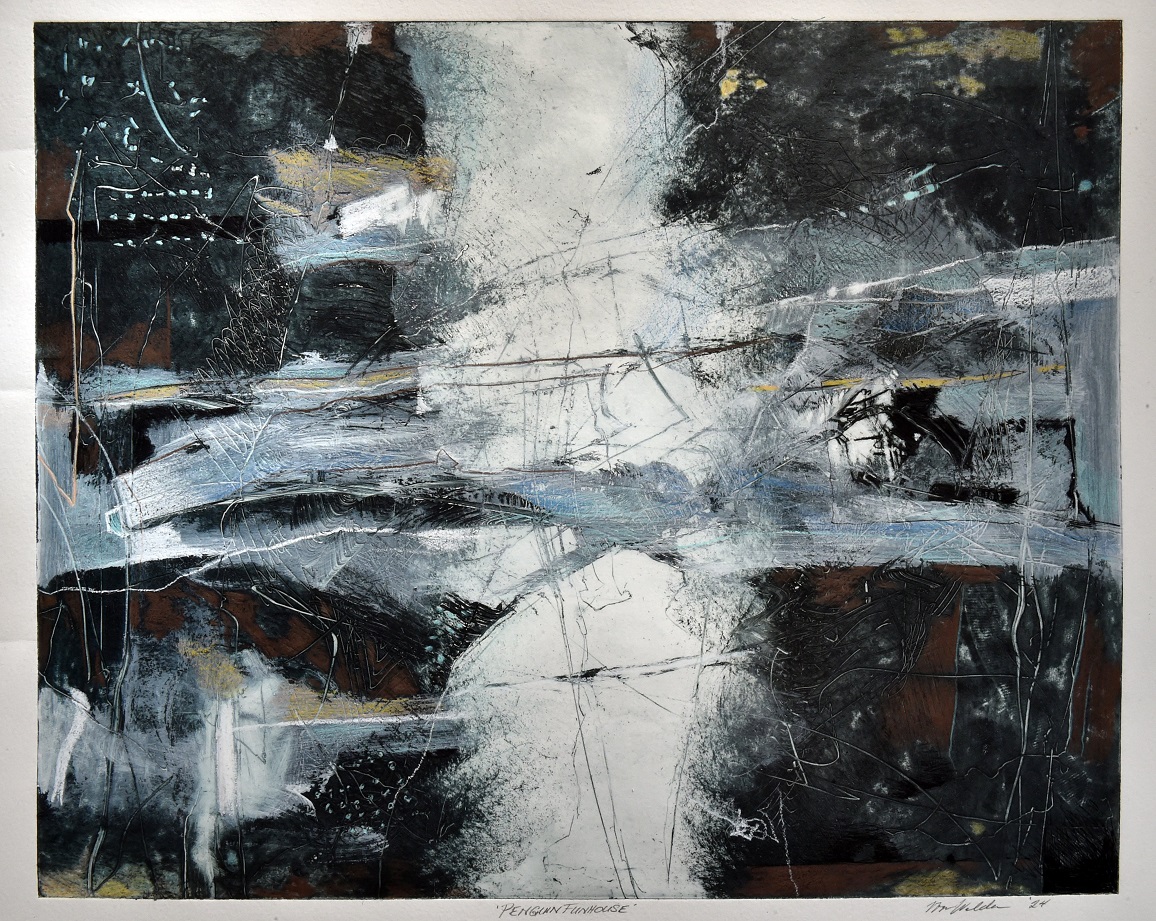
"I thought I could print this. Let’s see what happens here."
That led to 10 years of work inspired by found old licence plates, trucks and car parts during the era when "pop art" was popular.
"Different kinds of objects to print and then I’d draw or paint around them."
He also worked for a short time at print publishing house Ulae, where he worked with well-known artists such as Jasper Johns and Robert Motherwell.
"I couldn’t believe I was in the same room as these people — these were the rock stars of art."
That experience gave him the confidence to start up on his own, and he opened a print-making studio, collaborated with others and did his own work.
But it was not his only experience with the greats. He recollects being invited out to American postwar and contemporary painter Robert Dash’s (1934-2013) studio and being asked to pose nude for photographs, which he did.
That led to a collaboration and it was through Dash he met painter Elaine de Kooning and then her husband the Dutch-American abstract expressionist painter Willem de Kooning, with whom he also went on to collaborate.
"That was a milestone. That was the top of the ladder for me."
Each time he collaborated with another artist or produced prints for them, he learnt from them.
"There was something different, unique to latch on to each time."
Along the way they had two boys and then divorced. As part of the settlement he got a piece of land in the Hamptons, on the eastern end of Long Island, which, when he had the resources, he built a house on himself over six years.
"It became another major love — the act of building and creating it. It’s a post and beam house, very sculptural with nice materials and silly things all over the house."
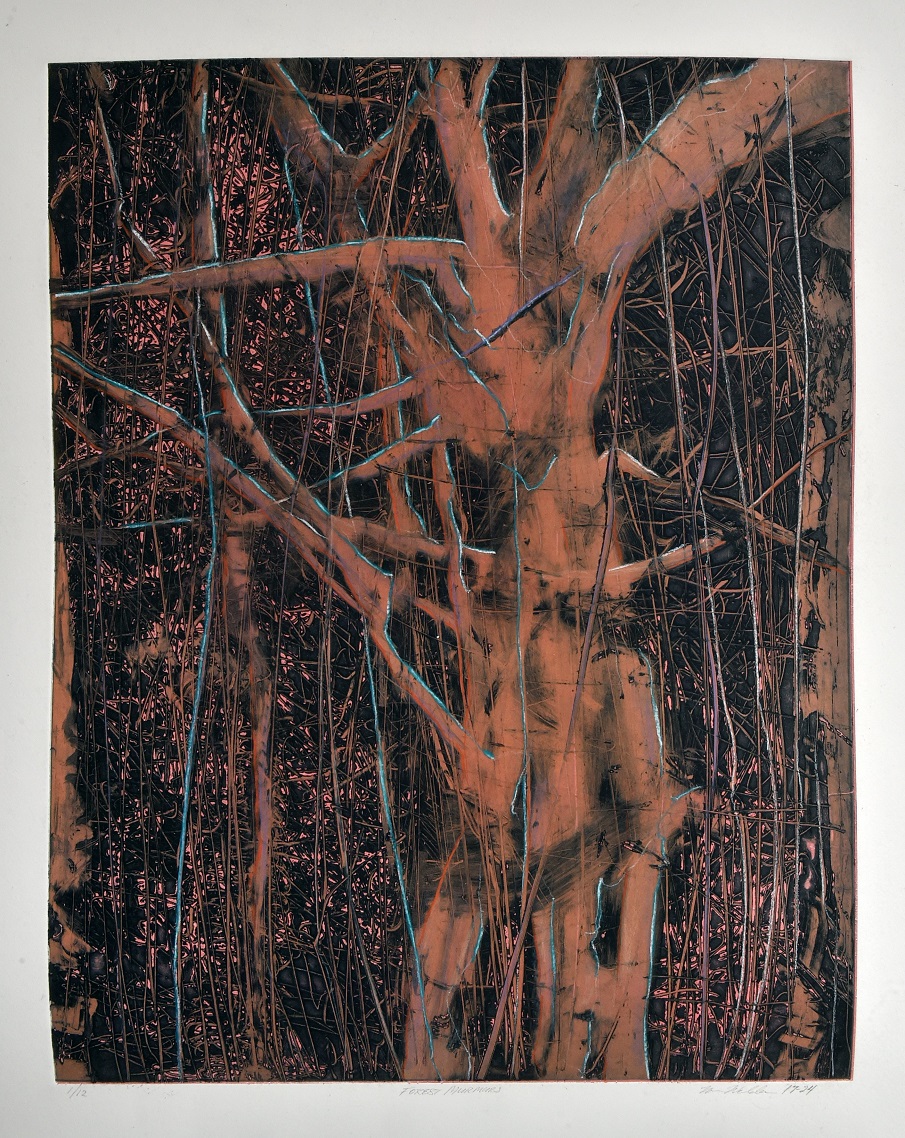
"People said to me it’s a really inexpensive way to do it but I said you have no idea how hard it is to get 200 artists together. It was a major ordeal. It’s a unique floor though. Each artist has made their own little statement."
But Welden says his biggest claim to fame is the development in the 1970s of an innovative printmaking technique which does not use the toxic chemicals of traditional methods. He believed the fumes and chemicals were causing artists to have health problems and credited his own good health to good ventilation in the draughty studio spaces he used.
He discovered sunlight and water could do just about everything he had mastered with lithographic stones, copper plates, wood and serigraphy. The new photopolymer technique he called "solarplate" does not use acids, hazardous materials or chemicals the other printmaking methods require. Solarplate is a light-sensitised, steel-backed polymer material which is exposed with ultraviolet light using either the sun or a UV exposure box and developed with water.
The "revolutionary" technique is now used in 54 countries around the world.
Welden, who also has a passion for classical music, brought this technique to New Zealand on his many trips here, including to the Dunedin School of Art when the late Marilynn Webb was running the print department as part of a QEII Arts Council scholarship in 1993.
"The three months was an incredible experience for me."
It changed the work he had come to do based on the rock formations of Northern Arizona.
"I got here and was so inspired by the landscape I saw on the hillsides. I saw the sheep tracks on the hillsides and saw the same lines I was seeing on the rock formations without a particular pattern, all random."
The trip was also a particularly memorable one as half-way through the trip he had to have his hip replaced, leaving him reliant on the generous artists around him, including Webb, Chris de Jong and Janet Downs, now the chairwoman of the Caselberg Trust.
"I got to know people here in a very genuine way. They are so giving — I love being here."
On this trip, Welden will share his knowledge in workshops and talks in Dunedin and Wellington, as well as work on his own material.
"This is really important, very meaningful for me to be able to benefit from the time to think, the serenity here, to reflect and be inspired."
He has brought some of his "reject" prints out to work on, something he does on every overseas trip.
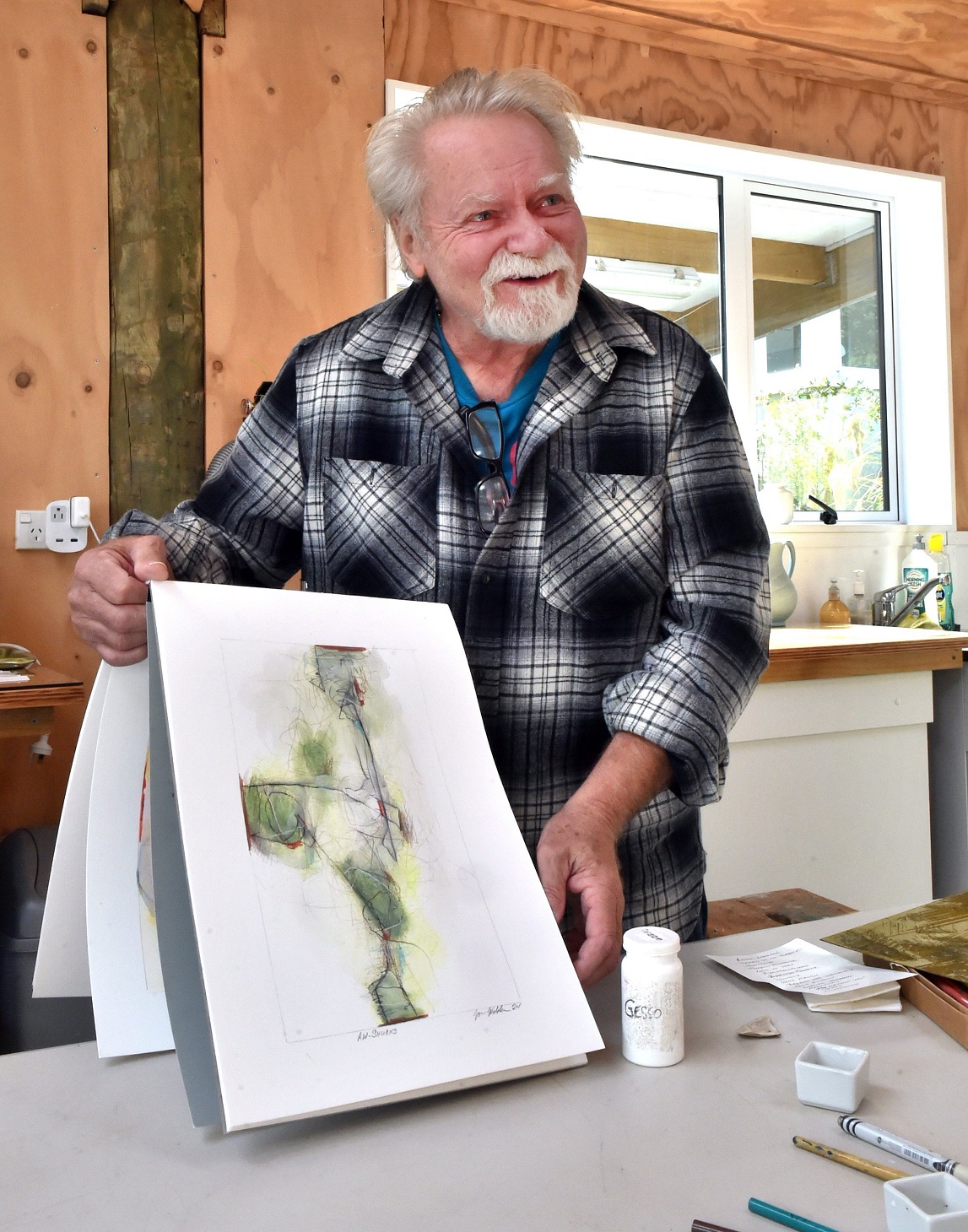
These days Welden is returning to his roots, doing more painting and drawing than printmaking. He already has pages of mixed-media paintings and drawings from his time in New Zealand.
"To me they are very playful. They start out with childlike scribbles. Children don’t think about something — they just do. I think it is important for artists to just do and not think too much.
"I consider myself to be an experimental artist rather than a conceptual artist."
It is a experience that he is loving.
"Oh yeah, big time."
He has been moving back to this point for some time as he began to paint or draw over his prints. One series of work came from a pile of zinc plates he found in an old barn which were corroded and stuck together.
"I pried them apart and looked at them. They were beautiful, so I wondered if I could print them."
He did a black and white series of prints and then decided to paint over them, creating an entirely new set of works.
"It was a mammoth amount of work — 22 plates in all to be inked and printed."
A Pollock/Krasner Grant came along in 2020 just as Covid hit, which was a huge relief to Welden, as the income he got from teaching and exhibiting — he has had 97 solo exhibitions — died and it allowed him to complete the coloured series. His planned trip to New Zealand for the residency also had to be postponed until now.
"It’s how I survived. I could live off that."
TO SEE
Screening of Lasting Impressions followed by Q and A with Dan Welden, Dunedin Public Art Gallery February 25, 2pm.

